|
In the last post I listed 10 primary content roles that will ensure you are adding value in your content marketing - a mandatory requirement for visitor engagement and conversion.However, while adding value is foundational, it won't convert anyone in and of itself. That's where secondary content roles come in. Good content marketing is beneficial to both the visitor and the brand.
Because secondary content roles are conversion-focused and talk about the company, they need to shine at the middle and bottom portions of your sales funnel - after visitors have already gleaned gems from your content and you've earned the right to talk about yourself. This is not to say that secondary content roles can't play at the top of the funnel, but they do need to be carefully regulated. Visitors may not yet know or care much about your brand, and this is content marketing (not sales or advertising). Content comes first, then marketing. Now that the disclaimers are out of the way, have a look at these four secondary content roles that will serve as catalysts for conversion. #1: Reveal Product Use CasesShow your visitors how awesome your offering is, but not by talking about your product. Instead, discuss what and how your product delivers solutions. And you don't have to just talk, either. A few ways that use cases can be revealed include articles, videos, demos, free trials, and presentations. Another big strength of revealing use cases is that it can be done quickly with little detail, or in long-form with tons of details. It all depends on (see a pattern here?) where your visitor is in the sales funnel. Leverage this secondary content role to open a visitor's eyes to unique ways your product can help them. #2: Accentuate Product BenefitsThis can overlap with revealing use cases, but it's not the same. In addition to discussing what and how the product delivers solutions, you'll want to harp on the positive impact the product has on your customers' day-to-day lives. A good writer will be able to look at your buyer personas and flesh out the emotional benefits to be had from the solutions your product provides. A good question to ask here is, "Why is buying this product worth it?". The visitor is not buying a drill bit (product), they're buying a drilled hole (solution). More specifically, they are buying a hole in their living room wall for a nail and picture to hang from (use case). But really, they're buying the warm, fuzzy feeling they'll get whenever they look at their loved ones in the picture frame. That's why it's worth it. #3: Highlight Unique Selling Proposition (USP)The middle and bottom portions of the sales funnel are where your visitor knows about your brand and knows they will need something similar to what you have to offer. What they don't know (yet) is which product and brand to choose. In order to win them over, your offering has to be exceptional at one or two important things. Just as importantly, they have to know what those things are! Let me know if you need some help developing a compelling USP, but once you have one, make a point to let visitors know what it is. It's on us as marketers to convince visitors of the value that we represent - they won't know unless we tell them! #4: Demonstrate Superiority Over CompetitorsIt's likely that there are some other brands trying to snatch visitors out of your sales funnel, and they'll do it, too - unless you can prove to your visitors that you are the best! Maybe you have amazing customer service, but they say they do as well. Maybe your product delivers incredible results, but their product is "best-in-class" or other such jargon. Content that converts uses definitive, objective, 3rd-party, or otherwise tangible means to show a brand's dominance in the industry. How do marketers leverage these content roles?I like to mix-and-match, focus on one, or use all four, but if you use more than one, I would recommend prioritizing them. Why? Sometimes it takes a lot of words (or seconds) to execute them properly, so your content piece may run out of room. In the next article, we turn to a huge question on the minds of many marketers - how "hard" or "soft" should the sell be for a given content piece?
2 Comments
"If you learn only methods, you'll be tied to your methods. But if you learn principles, you can devise your own methods." - Ralph Waldo Emerson. In articles one and two of this series, we discussed some principles of content marketing, such as setting appropriate content goals for a given piece.
Then, we talked about how to ensure your content goals match a specific audience at a specific place in your sales funnel. Here are two refresher definitions from the previous posts: Content goals are what we want to happen as a result of the published work. Ideally, these are the first elements of the content creation process. Content metrics are the rulers by which we measure the achievement of the content goals. These ought to be determined later on in the process. Now, we dive into the methods. How does good content "work"? Content marketing does it's job through functions such as: entertaining visitors, addressing common problems, and initiating social interactions. In the Precision Pen content creation process, these functions are called "content roles". Content roles are the actors in your play, working to incite a specific reaction from your audience. What's the "specific reaction"? Your content goal(s)! "Creating Brand Awareness" is a great top-of-funnel content goal, but unless your content performs roles like entertaining visitors or addressing common problems to support the goal, it will never happen. There are two basic types of content roles. Primary content roles focus on adding value to the piece for the visitor. Secondary content roles will help the visitor as well, but their aim is to highlight aspects of the brand or product that steer the visitor towards conversion. Primary content roles: putting the "content" in content marketing. After choosing content goals for a piece, I recommend setting 1-3 primary content roles to ensure you'll add plenty of value for your visitors. #1: Entertain Visitors Providing amusement with a well-placed logo and company name will help familiarize visitors with your brand's existence. This can take the form of a purely entertainment-oriented video at the top of the funnel, or it can play second fiddle as a witty quote in one of your niche how-to guides. #2: Address Common Problems This content role helps visitors solve a common ailment that your industry suffers from. It's best used in the top of the funnel to have a broad appeal for folks that may not yet know about your brand. #3: Provide Thought Leadership You don't have to be an expert to know that B2B customers are absolutely in love with "innovative" and "disruptive" ideas these days. If you want to establish industry expertise, provide new thoughts that pioneer dark space in your field. #4: Introduce Product This role is crucial for letting folks know about your product, but best used at the top of the funnel, where visitors are probably unaware of what you have to offer. #5: Educate on Relevant Topics This content role differs from thought leadership in that it focuses on what everyone is already talking about in your industry. While you don't provide as many new thoughts, you do provide better teaching on the timeless or trending topics of the day. #6: Share Story Talking about your brand can be very effective in relating to your visitors and establishing rapport, among other things. It has to be done properly, though, with a relatable element that speaks to your visitors as humans. Be sure to weave in facets of your unique value into the story, when appropriate. #7: Initiate Social Interactions In today's world of social media, connecting with visitors on the social platforms where they live is absolutely vital. #8: Challenge Traditionally Held Beliefs This one is a lot like #3, "Provide Thought Leadership", but with a twist. Instead of pioneering space in your field, you will actually go against what other thought leaders have said about topics in the industry. This is tough to do well, so be sure you have some data, experience, and/or sound logic to support your unique spin. Challenging is best reserved for the middle and bottom portions of the funnel after you have already proven your expertise in the industry. #9: Display Product Use Cases This role helps the visitor recognize the variety of applications for your product. #10: Provide Comparisons Providing comparisons between your offering and the competition's helps to educate visitors on their options. Of course, when done properly, this content role can also serve to prove your superiority above the competition and establish preference for your brand. My next post discusses the "how" of effective content marketing and digs into the secondary content roles that serve to promote your brand and drive conversion. Whether you’re marketing your brand, your product, yourself, or your ideas in a business meeting, words matter. These words will throw your readers into “scan” mode, “cut-through-the-jargon” mode, or even “eye roll” mode, if you’re not careful. Any meaningful content you have may be tainted by these tired-out terms. Use them cautiously and wisely (or not at all). Without further ado: Sophisticated ways to (falsely) claim, “I’m special” If you must use them, please explain how they apply in the given context. Better yet, describe in detail what these words are pointing to. Don’t tell me your product is “awesome”; tell me it shaves 35% off of my commute time. Now that’s awesome! #1: Innovative Back in the day, “innovative” described what was truly original and advanced. But blink twice and now every business with a millennial in marketing is “innovative”. But they’re not, really. Most companies don’t have something truly original and advanced – as evidenced by their use of “innovative” in marketing collateral. #2: Disruptive Other than your sleep cycle or diet, what has your business actually disrupted lately? And by the way, is that actually your goal? What most markets need is an improvement, not a disruption. We’re looking at you, tech companies. #3: Best-in-Class (See Also, World-Class) So apparently, someone somewhere decided they were better than everyone else and called it being “best-in-class”. Next thing you know, seven out of ten companies in the same industry are “best-in-class”. Go figure. That isn’t to say you can’t use these phrases in a marketing piece. There’s just one condition: prove it. #4: Secret Sauce If your algorithms do the same thing that a competitor’s do, any secrets you may have don’t matter. People are tired of seeing this food-based claim to exclusivity. Side note: Google recently told me that one of my emails was deemed important per their “magic” sauce. Hmm, okay. I guess their sauce has supernatural powers… #5: Artisan Yes, maybe your $75 organic mustache wax. Perhaps that $13 pastry from the local coffee shop. But not these: And definitely not these: #6: Creative This one commands the same judicious application as “innovative”. For instance, there are scads of “creative” writers out there. But are there, really? Or are most of them just ordinary people who write? #7: Unique So let me get this straight. Your product or service:
Is “unique"? When the “common” words just won’t do: Words like these are typically used for one of three reasons: 1. The actual content of the message is weak and needs some padding 2. The words are super-trendy, so why not 3. You’re pretentious #8: Utilize You know what people need to “utilize” more frequently? Simpler words. Unless you live in Pompousville, you don’t need to toss out a decent, one-syllable word for a three-syllable word that means the exact same thing. Utilize = use. #9: Execute I’ll take the electric chair… #10: Authentic Mmmm… just say it with me: “Authentic”. Do you feel these millennial vibes right now? I hope whatever you’re selling is real, for crying out loud. Because that’s all that “authentic” means. No one cares These words are often used appropriately. The problem is, they don’t mean much to your prospects. #11: Results So, I’VE heard – get this – Acme Data Solutions offers… “results”!! (Actually, I think they may “deliver results” instead…) Oh and guess when they do it? In real-time. #12: Passionate “We have a passion for…” “Our people are passionate about…” “Our passion around…” Your prospects couldn’t care less about your passion. They care about what your passion produces for them – a better product or service. So please, describe the heightened benefits of the product/service… not your intense emotions about it. #13: Efficient #14: (Blank)-Focused I feel sorry for this term - there’s really nothing wrong with it. You can be client-focused, customer-focused, results-focused, focus-focused… all good things. We’ve just overused the daylights out of it. As opposed to…? When marketers use these terms, we imply that something we offer is exceptional when it’s actually commonplace. Instead of talking about these (hopefully) typical facets of a product/service, let’s just act upon them and focus on differences that matter. #15: Strategic If something isn’t strategic, then what is it… trivial, unimportant, or unplanned? It goes without saying that you (and your competitors) are strategic in some sense of the word. I hope. Instead, tell us how the strategic nature of your offering equates to more sales, time, or peace-of-mind for me. If it does those things, we honestly don’t care if it’s strategic or not. #16: Actionable Because somehow, we dumbed down insights into two categories: those that are actionable, and those that are not. It’s really just a marketing ploy because all true insights are, by definition, actionable. You can’t always make decisions based on unstructured data or information, but an insight can always point you in the right direction. #17: Proactive Boy, it’s a good thing your company is proactive. No one else is! All your competitors are just sitting around, waiting for life to happen. Bonus: Corporate Edition! Just for fun, I asked a friend of mine to have his team send back some overused words from his office… apparently I didn’t make my request clear enough. Here was his response: "Hi, Luke! Can I open a dialog here? I want to strike while the iron is hot, but am muddy on the ask. To be clear, the objective is that I collaborate cross-functionally with my partner’s workforce to pinpoint the real-time verbiage our counterparts use to redundantly and unnecessarily explain elementary learnings, thereby effectively hamstringing efficient communication. If so, to be fully transparent, I may need to circle back on this. We are slammed right now and I don’t have the bandwidth to juggle additional action items. Our superiors may think we’re trying to boil the ocean. Unless there’s a significant paradigm shift, we may have to re-task this deliverable down the road. Best regards, -Kevin" (name changed because “Kevin” isn’t a real person anyway) Let’s face it – there are more than 17 words that we should watch out for in the coming year. What were some that you thought of? In this post, I'm going to attempt to clarify the lines between content goals and content metrics. Then, we'll discuss my process for how to set content goals that lead your visitors to purchase decisions. If you are just now jumping in, I'd recommend reviewing my earlier post about a prevalent problem with today's content marketing mindset - a strategic focus that has shifted away from sales goals and towards higher metrics numbers. To summarize, when we focus on metrics, marketers design content to "go viral", getting tons of likes, shares, and so on. Sometimes it does, usually it doesn't, and ultimately it targets visitors at the top of the funnel, doing little to drive conversion. When we focus on goals, there's still some viral content, but there's also a significant amount that doesn't have a broad appeal, targeting visitors that are further along the sales process and pushing them towards a purchase decision. How a metrics focus misses the big picture To get an image of goals versus metrics in your mind's eye, think about a sprinter that is trying to set a new record in the 100-meter dash. What the sprinter hopes to do is their goal: not only win, but to win by a greater margin than anyone has before. How that goal is measured is the metric: milliseconds on a stopwatch. When the sprinter is goal-focused (as content marketers ought to be), they run hard and fast, stay within the lines, take off only after the gun fires, and so on. But as I discussed in the last post, content marketers have lost sight of the overall goals of their content. If our sprinter were to totally lose sight of their goal and focus on the metrics, they might start to cut the corners of the lines for a faster time. You may see them try to get a running start. Of course, when too much of a focus is placed on metrics, the sprinter may get a "better" time, but will never reach their goal because the metric score has been cheapened by cheating. To remedy the blending of content goals and content metrics, it's helpful to intentionally separate the two with some (not exhaustive) examples: On the left, you can identify a variety of legitimate goals for content. All of these goals will support making a sale down the line. On the right, you'll find some examples of metrics. Metrics are forms of measurement, and while high numbers are cool, they don't necessarily drive conversion. In the middle, you'll see the examples of overlapping goals and metrics. This overlap usually occurs near the bottom of the sales funnel, where sales goals become much more concrete and can be quantified by numeric values. Let's completely forget about metrics (for now) Again, while metrics are important, they are measurements of the goal, not the goal itself. Before even starting a content piece, we should ideally have set one or more content goals. In the words of renowned author Stephen Covey, "Begin with the end in mind". Defining which metrics are best for a content piece depends on your topic, call to action, format, platform, budget, and more. Ideally, we should figure out what to do before we decide how to execute and measure it, so let's first look at different goals that will nudge our visitors down the sales funnel: Above you'll see a sales funnel with a sampling of content goals inside. As your visitor (little green person) begins to interact with the brand, certain goals (call them steps, milestones, phases, levels) must be achieved for them to move down your sales funnel - especially in the B2B world.
At the bottom of the graphic is the endgame - closing sales. But your visitor isn't going to just buy from you right out of the gate (unless you're Comcast and Cox isn't available). You have to get them through that sales funnel. Even if these goals aren't all met consciously in the visitor's mind, they generally have to be met before someone hands you their credit card info. How to assign content goals appropriately There's definitely a method to the madness here. You don't want a content goal of "closing sales" if the visitor hasn't even heard of you yet. That's an extreme example, but it makes a point: the content goal should match where the targeted visitor is in the sales process. That leads us to two very important notes:
"What needs to happen to/for the (target audience) at the (position in the sales funnel) that will help them move through the sales process and closer to a purchase decision?" The answer(s) to that question are your content goal(s) for the piece. Now that one or more clear goals have been defined, read my next article as you move on to the "how". What will your content actually do to accomplish your goals? 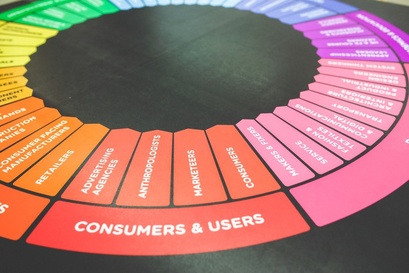 So much content. So few results. Such is the dilemma of over worked, under equipped marketers talking to an information-saturated consumer group. Forget about conversion... how about a little engagement? A like, or two? If you can relate, don’t feel bad. You’re among many marketers and small business owners that struggle to make waves in the ever-rising content sea of the digital age. Here's the problem As I've watched digital marketing trends and experiences with my clients, I've noticed a harmful trend in strategy emerging - a fatal flaw perpetuated by paid promotion, analytics services, and pay-per-word content mills. You see, when words like "goals", "results", and "effectiveness" get paired with content marketing, we've been conditioned to think of things like:
Ever. Yes, it’s a bit counter-intuitive, but think about the final goal of all marketing. It’s driving sales, right? At the risk of dramatic oversimplification, a sale happens when a customer’s preference for your brand and offering intersect with an unmet need. So if the endgame is sales, and sales result from trust and preference, then the goal of content marketing should be to solidify trust and preference while exposing unmet needs. The problem is, we're spending our time trying to get more likes, shares, and other engagement, but these things don't support sales. They are metrics, which are great as a form of measurement, but we've actually made them our goal. We've put the cart before the horse. Content Goals vs. Content Metrics Content goals and content metrics can be very similar and even overlap, but they are not the same: Content Goal: A content marketing objective that will move the visitor down the sales funnel and better position them for a purchase decision. Content Metric: A method of measuring visitor interaction with content. We recognize that building brand awareness is a legitimate content goal because brand awareness is foundational for buying decisions (AKA, sales). On the other hand - views, likes, and shares are examples of content metrics that we can use to estimate whether or not the brand awareness goal is being achieved. A good cookout gone bad Let's say you've been volun-told by your boss to take care of drinks for the marketing department cookout. The (obvious) goal here is that the folks at the cookout are refreshed by and pleased with the drinks. However, if you and your boss are focused on metrics instead of goals, you can show up to the cookout touting 20 cases of expired, warm, generic soda - and your boss will think you’re a hero. Why? Because the boss is focused on metrics, and “20 cases” means a lot of drinks – great job! At the end of the day, the metrics-focused marketer is left scratching their head when everyone is complaining about the lame drinks – or when their content marketing is getting zero “results”. When marketers focus on metrics, they create content to win views, watch time, likes, and shares. This results in plenty of positive, funny, touching, remarkable, and clever content with a wide appeal, but not much that leads to conversion. In the words of Marcus Sheridan, founder and president of The Sales Lion: "The biggest mistake we see organizations making with their content marketing right now is that they lack bottom-of-the-funnel types of content. Too much content is fluffy – stuff that doesn’t truly address buyer questions, concerns, worries, fears, etc." On top of that, B2C metrics-focused content is often inflated with hype, click bait, presumptuous claims, and spam. In short, a metrics focus produces cheap wins, but expensive disappointment for the brand. When did metrics turn into goals? After the content is created with the purpose of getting those likes, the metrics-focused marketer proceeds to pay for promotion and analytics with the exact same purpose, which leads us to one of the roots of the problem: We have been conditioned by marketing gurus and social platforms to shift away from legitimate content goals, and shoot for higher metrics numbers instead. We’re looking at you, Facebook (and LinkedIn, Google, etc.). Now don't get me wrong - Facebook and company DO like having solid user-generated content (because it funnels visitors to their platforms). However, when it comes to paid promotion and analytics, they don't give a rip whether or not your content supports your sales. Though there are exceptions (such as the Facebook Pixel tracking actual conversions) these companies profit primarily from boosting and tracking higher metrics numbers - not from visitors moving down your funnel. When we pay for ads to promote our content, we're trying to buy something that will move our visitors down the funnel, but that's not what's being sold. We're really buying higher metrics numbers, which, in and of themselves, don't help us. What’s the fix? The solution for metric-focused content strategies is essentially to reverse engineer your process. Start by deciding what you want the piece to accomplish in your sales funnel, and work your way backwards from there to determine how to craft content that supports your endgame. To read in detail on how to reverse engineer your content strategy, check out my next article in the series: How to Set Content Goals That Support Conversion.  Photo by nenetus at freedigitalphotos.net Photo by nenetus at freedigitalphotos.net Here's what everyone already knows: you need to win more dollars from Millennials (Gen Y) - the up-and-coming big spenders in every industry. The billion-dollar question: How? There's a lot of misleading buzz about what actually works for Millennial marketing. Here's some focuses that DON'T work:
Think I'm crazy? Try to picture a well-known retailer that's synonymous with this list... *Drum roll please* How about Walmart? No way! Their image is virtually the opposite of all of the above. But Walmart is the clear retailer of choice for Millennials. How did that happen? The "non-PC" truth: Millennials just care about themselves Expert Millennial marketing highlights the direct benefits from the product/service. Like, here and now. That's why the perception of wide assortment and low price at Walmart has Millennial appeal, even though Walmart's prices aren't always the lowest. Unfortunately, you can't just scream "Benefits!" and win big with Millennial marketing... A relevant content marketing strategy and a relatable, conversational tone are 100% necessary (easier said than done). But everyone (supposedly) knows that - the real secret is tougher to implement. Missing Link: conversion-focused copywriting that's like a river The ever-shrinking attention span of Millennials only captures pieces of your content. Therefore, those key pieces must flow together, and point to a reasonable and intuitive next step.
Execute your content marketing strategy with the above F-R-I steps of river-like copywriting. Use a relatable, conversational tone. You'll see increased profits and market share in no time. ______________________________________________________________________________________ If this was helpful for you, don't share it with anyone else! Seriously... I understand. This is a competitive world. Keep the edge to yourself. Also, if you're busy, focused elsewhere, lacking resources, or don't have the time to tackle all of this... I can lend an affordable hand, and I'll be here whenever you need it... just let me know. To your success, -Luke  If you're a small business taking aim at the moving target of effective marketing, then you know by now the importance of having a presence in social media. You also know how hard it is to navigate social between calls, meetings, and actually doing work! Let's look at three simple ways to make the social side of marketing a bit more manageable. 1. Don't open a social channel unless you're going to maintain it! This may sound like a no-brainer, but take a look at some Facebook pages for businesses in your area, and you'll see it happening all over the place. Small businesses often put an account together with the best of intentions, but fail to maintain their platforms with consistent content. This will not earn you respect from the Millennial consumer. Post at least once per week with content that your followers will find beneficial. 2. Use the same content across your social channels. In the early stages, only your most die-hard fans will follow every channel you're operating, so go ahead and use the same content for each channel:
3. Leverage social networking platforms to link your social content to your website, and vice versa. The ultimate goal of your social media activity is to move your customer to a place where they convert. Use social media buttons on your website to connect web pages to social platforms, and wherever possible, use any social content to link the reader back to your website again to keep them in the cycle. See, that wasn't too bad, right? Best of luck to you as you use these tips to boost your social media presence in a market where it's only becoming more important every day. All the best, -Luke If you liked it, share with friends.
If you didn't, share with enemies |
Luke Hastings
I increase profit and market share for businesses across the U.S. through conversion-focused copywriting. Let's talk about how I can do the same for your business. Archives
March 2017
Categories |



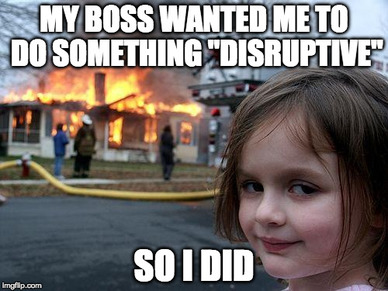

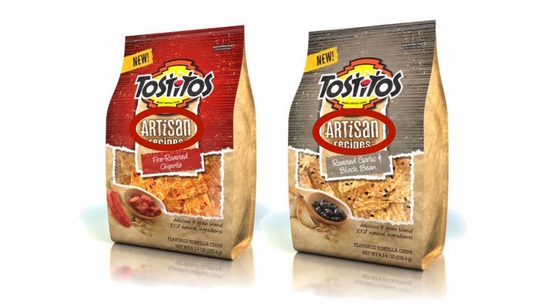

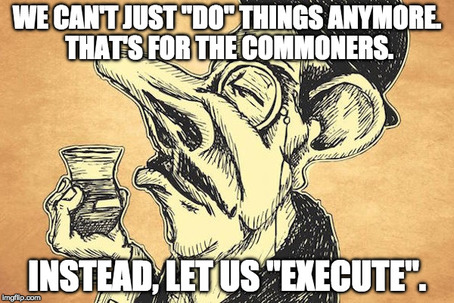

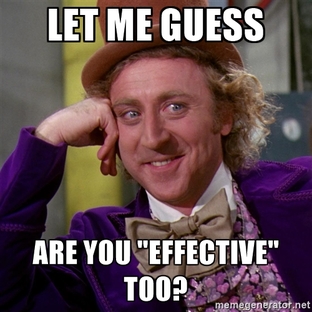


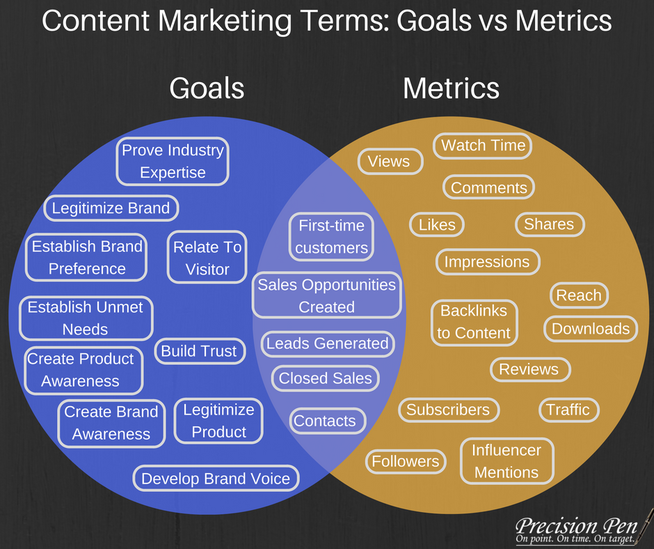
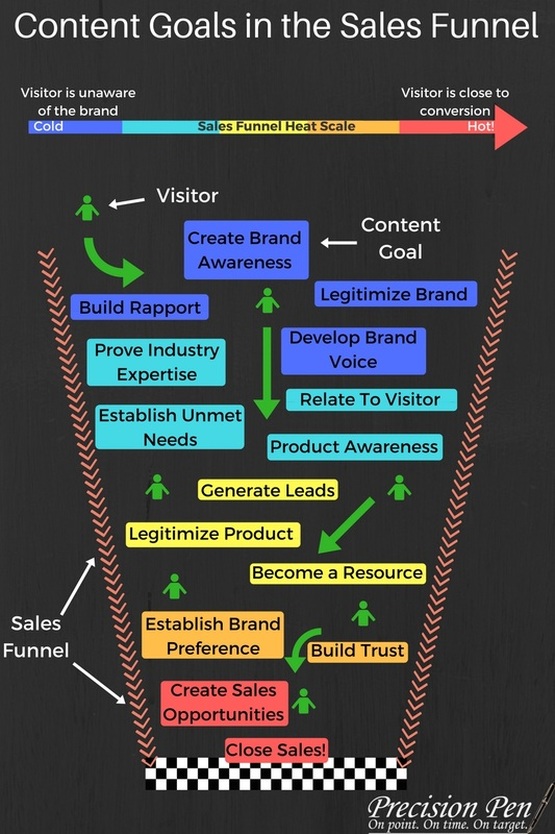


 RSS Feed
RSS Feed
